Benro TMA37C Mach3
Rated 3.75 out of 5 based on 4 customer ratings
$251.99
Get the perfect shot with the Benro TMA37C Mach3 tripod – the ultimate combination of stability and flexibility, for any photography application.
Description
Benro TMA37C Mach3 Tripod: Setting the Standards High for Tripods
When looking for a high-quality tripod, there are a variety of factors to consider. The weight, height, and stability of the tripod are all important elements to take into account. The Benro TMA37C Mach3 Tripod has set high standards for tripod design by ensuring each of these elements are exceptional.
First, the weight of the tripod is very important, as it affects how easily the tripod can be transported. The Benro TMA37C only weighs 3.70 lbs, making it lightweight enough to take on long hikes while still being strong enough to support a camera and lens up to 35.3 lbs.
The second factor is the height of the tripod. The Benro TMA37C has a maximum height of 66.9 inches, making it easy to shoot at eye-level for most adults. The minimum height of the tripod is also a low 16.7 inches, allowing for very low angle shots.
Most importantly, the stability of the Benro TMA37C Mach3 Tripod is remarkable. It is made of a carbon fiber material that is durable and provides the necessary stability for any situation. The tripod is also equipped with spiked feet for outdoor use or rubber feet for indoor use.
The Benro TMA37C Mach3 Tripod also features twist-lock legs for quick and easy setup, even in the most challenging environments. The legs can also be locked at three different angles to ensure further stability.
Another feature of the Benro TMA37C Mach3 Tripod is the versatility provided by the center column, which is reversible for low angle missions or shooting beneath obstacles. The center column can be removed and replaced with an included short column for even lower-level photography.
The Benro TMA37C Mach3 Tripod also includes a ball head, which is smooth and easy to use. It can support a camera and lenses up to 35.3 lbs and includes an Arca-Swiss compatible quick release plate.
Overall, the Benro TMA37C Mach3 Tripod is an exceptional tripod that sets the standard in tripod design. With its lightweight carbon fiber frame, impressive stability, and quick setup, it is the perfect tool for photographers looking to capture amazing shots in any situation.
Carbon fiber Tripod, Hook , Maximum Height 161.5 cm
Benro TMA37C Mach3 properties
| Product name |
TMA37C Mach3 |
| Type of Tripod |
Tripod |
| Features |
Hook |
| Leg Sections |
3 Sections |
| Leg Lock Type |
Twist Lock |
| Tripod Thread |
3/8″ -16 UNC |
| Suitable Usage |
Photo |
| Material |
Carbon fiber |
| Lowest Work Height |
38.5 cm |
| Maximum Height |
161.5 cm |
| Folded Length |
62.5 cm |
| Load Capacity |
16.0 kg |
| Weight |
1.85 kg |
Frequently Asked Questions:
How do I properly attach my camera to the Benro TMA37C Mach3 tripod for stable and secure shooting?
First, make sure that your camera has a standard 1/4-20 thread on the bottom. If it does not, you may need to purchase an adapter plate to attach your camera to the tripod. Loosen the knob on the quick release plate by twisting it counterclockwise. This will allow you to slide the plate onto the tripod head. Align the center point of the plate with the center point of the tripod head. Tighten the knob on the quick release plate by twisting it clockwise. This will lock your camera into place and prevent it from sliding around during shooting. Check to make sure that the camera is level by looking through the viewfinder or using a spirit level attached to the tripod head. If you need to adjust the position of the camera, loosen the knob on the quick release plate again and slide it along the rail on the tripod head. Once your camera is in the desired position, tighten the knob on the quick release plate to secure it in place. To detach your camera from the tripod, loosen the knob on the quick release plate and slide it off the rail on the tripod head. By following these steps, you can ensure that your camera is properly attached to the Benro TMA37C Mach3 tripod for stable and secure shooting.
"How do I properly attach my camera to the quick release plate on the Benro TMA37C Mach3 tripod?"
First, make sure that your camera has a standard tripod mount (1/4"-20 thread). Most modern DSLRs and mirrorless cameras do. Locate the quick release plate that came with your Benro TMA37C Mach3 tripod. This is typically a small rectangular piece of metal or plastic with a similar 1/4"-20 thread on one side. Attach the quick release plate to your camera by aligning the plate's threaded hole with your camera's tripod mount, and then screwing the plate onto the thread. Make sure that it is securely fastened. Attach the quick release plate to the Benro TMA37C Mach3 tripod by first aligning the plate's corresponding notches or slots with the tripod's quick release clamp. Then, press the lever of the clamp downward to lock the plate into place. Make sure that it is securely fastened. To remove your camera from the tripod, simply reverse steps 4 and 3. Again, make sure that your camera is securely attached to the quick release plate before detaching it from the tripod. As a general rule, it's a good idea to test out your camera's attachment to the quick release plate before heading out on a shoot. This will help you ensure that everything is working properly and prevent any unwanted surprises once you're in the field.
How should I properly attach my camera to the Benro TMA37C Mach3 tripod, and what steps should I follow for optimal stability and durability during use?
To attach your camera securely to the Benro TMA37C Mach3 tripod, follow these simple steps:
1. First, ensure that your camera's tripod socket is compatible with the 1/4"-20 threaded mounting point on the quick release plate included with the TMA37C. Most modern DSLR and mirrorless cameras will be compatible, but double check just to be sure. Attach the quick release plate to your camera's tripod socket by aligning the two screw threads and tightening them securely. If you prefer a more secure connection, consider using a locking screw or plate adapter to prevent accidental dislodging during transport or handling. Next, attach the quick release plate to the TMA37C's head by sliding it into place on the machined aluminum quick release clamp. Make sure that the plate is properly aligned and centered before tightening the clamp lever. To further enhance stability and durability during use, consider using a tripod plate adapter to add extra thickness or weight to the quick release plate. This can help prevent unwanted vibrations or movement, especially in windy conditions or on uneven terrain. Finally, when carrying or transporting your camera and tripod, always ensure that the quick release clamp is securely locked to prevent accidental dislodging or damage to your equipment. This will also help protect your camera from potential impacts or falls during transport. By following these steps, you can ensure optimal stability, durability, and ease of use when attaching your camera to the Benro TMA37C Mach3 tripod. With its high-quality construction, machined aluminum components, and robust quick release system, the TMA37C is an excellent choice for photographers and videographers seeking a versatile and reliable tripod solution.
How do I properly attach my camera to the Benro TMA37C Mach3 tripod?
To attach your camera to the Benro TMA37C Mach3 tripod, follow these steps:
1. Loosen the quick-release plate locking knob on the bottom of the plate by turning it counterclockwise. Insert your camera's tripod mount into the quick-release plate and ensure that it is securely attached. Tighten the quick-release plate locking knob by turning it clockwise until the plate is snug against the camera body. Attach the quick-release plate to the tripod head's mounting plate by inserting the plate's release lever into the slot on the side of the head. Press down on the release lever to lock the plate onto the tripod head. To remove your camera from the tripod, press and hold the release lever while lifting the camera off the plate. When not in use, store the quick-release plate and release lever in a safe place to prevent loss or damage. Remember to always ensure that your camera is securely attached to the tripod before taking any shots to avoid any potential accidents or damage to your equipment.
How do I level the tripod legs on uneven terrain, as the bubble levels are sensitive and difficult to read in bright sunlight?
Firstly, try to position your tripod on a relatively flat area. If that's not possible, you can use a technique called "scouting" to find the best spot. Look for two points on the ground that are roughly equidistant from each other. This will be the reference points for leveling your tripod. Place one leg of the tripod on either side of these two points and adjust it so that both legs are at the same height. Now, move on to the next leg and position it in a way that it's roughly halfway between the two reference points. Adjust this leg until it's level with the first two legs. Continue this process for each remaining leg, adjusting them as you go along. When all three legs are touching the ground, your tripod should be relatively level. To check if the bubble levels are still sensitive to bright sunlight, you can try using a small piece of cardboard or a dedicated solar shade (if available) to block direct sunlight from hitting the levels. This will help you get a more accurate reading. Alternatively, you could use an electronic level that's less affected by light conditions. These devices typically feature a digital display and often have a built-in memory function, which allows you to store leveling data for later reference.
How do I adjust the tripod's counterbalance system to properly balance my camera setup, considering it's set up for a DSLR body but also has a heavy telephoto lens attached?
1. Understand how the counterbalance system works**: Most tripods have a counterbalance system that allows you to adjust the weight of the load (in this case, your DSLR body and telephoto lens) by adjusting the balance points on the tripod's legs. Locate the counterbalance mechanism**: This is usually found at the bottom of one or more of the tripod's legs. It may be a small dial or a lever that you can adjust to change the balance point. Set the counterbalance for the DSLR body alone**: Begin by setting the counterbalance system for just the DSLR body. You'll need to do this before adding the telephoto lens. This is because the counterbalance system needs to be set correctly for the weight of the camera body first, so that it can then compensate accurately for the additional weight of the lens. Add the telephoto lens and adjust the counterbalance**: Once you've added the telephoto lens, you'll need to adjust the counterbalance system again. This time, you'll want to ensure that the balance point is set correctly for the combined weight of the camera body and the lens. Test the tripod's stability**: After setting the counterbalance system correctly, test the tripod's stability by gently tilting it or trying to lift one leg off the ground. If the tripod feels stable and doesn't tip over, you've set the counterbalance correctly. Make adjustments as needed**: If the tripod still feels unstable, you may need to make further adjustments to the counterbalance system. This may require some trial and error, but with practice, you should be able to get it right.
My tripod suddenly collapsed when I was using it on uneven ground, is this a design fault or just an accident waiting to happen?
1. Tripod Design**: Is your tripod well-suited for uneven terrain? Does it have features like adjustable leg tips or spikes?
2. Usage**: Were you using the tripod in a way that was likely to cause it to fail (e. Condition of the Tripod**: Is your tripod well-maintained and in good condition? Over time, tripods can wear out, making them more prone to failure. If after considering these factors you still believe that the collapse was due to a design fault, you might want to contact the manufacturer or look into purchasing a different tripod that is designed for uneven terrain.
Before you buy Benro TMA37C Mach3
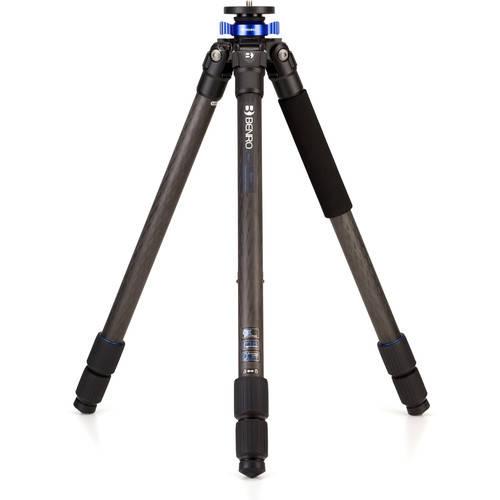


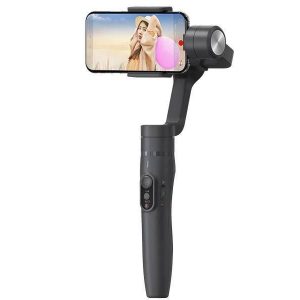
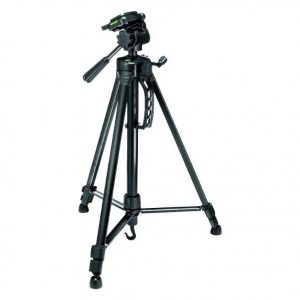
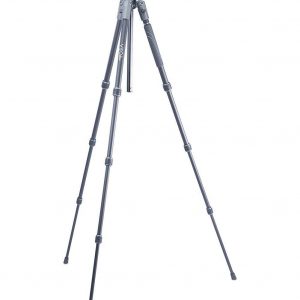

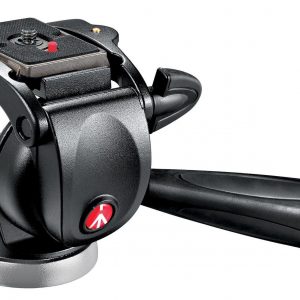

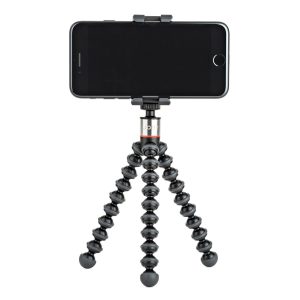
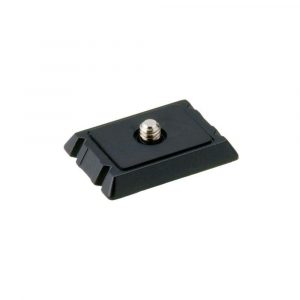
D.D –
The carrying bag is too short !! Don’t fit a tripod and a Benro gear head. If you pack the tripod head separately, it probably will all fit, but to me it’s surprising that it doesn’t.
Jeremy Green –
My other Benro and both are wonderful!
You could put a house on this, not just a camera.
I purchased this Benro tripod to fit one of their geared heads and to provide more stability during certain photo shoots.
I photograph surfers on the coast of California I also often visit the Norwegian Fjords, which fascinate me incredibly. The coast often has extreme conditions: sand, salt water and harsh sun. This tripod is very stable in strong winds, waves, sandy beaches, but also on slippery rocks with water flowing on it. The conditions here punish the equipment, and this tripod held up well. Salt water will corrode the metal parts but I did not find any corrosion on this tripod. the fact that I care for it and try to maintain it.
It’s also delightful that it comes with extra equipment as standard, including two different foot styles and a carrying bag. I highly recommend this tripod. The price is worth it.
Derek –
I recently purchased the Benro TMA37C Mach3 tripod and have been pretty impressed with its performance so far. With a folded length of 62.5 cm, it’s easy to take with me on my travels, and the carbon fiber construction makes it both lightweight and sturdy.
One of the things that really sets this tripod apart is its photo suitable usage. Whether I’m shooting landscapes or portraits, the Benro TMA37C Mach3 offers excellent stability and precision to ensure that my shots come out crisp and clear. The leg locks are intuitive and easy to operate, and I appreciate the rubber feet that help keep the tripod stable on uneven terrain.
Compared to other tripods I’ve used in the past, I would say that the Benro TMA37C Mach3 definitely holds its own. It’s not the most affordable option out there, but the quality and performance make it worth the investment. I’ve found it to be especially useful in low-light situations, where the stability of the tripod really helps to minimize camera shake.
As far as delivery goes, I had no issues getting the tripod shipped to Milwaukee. I ordered it in June and it arrived within a few days, so I was very pleased with the service. Overall, I would give the Benro TMA37C Mach3 a solid 4 out of 5 rating.
Grayson Gentry –
I had high hopes for the Benro TMA37C Mach3 tripod when I purchased it in March, but unfortunately it has not lived up to my expectations. As a waiter in Durham, I often take photos in my free time and needed a steady and reliable tripod. I was drawn to the TMA37C’s three section leg sections and high maximum load capacity, but the 38.5cm lowest work height has proven to be a major issue for me. It is simply too tall for many of the shots I want to take.
Compared to other tripods I have used, such as the Manfrotto PIXI and the Vanguard VEO, the TMA37C Mach3 falls short in terms of versatility and ease of use. The other tripods were able to get much lower to the ground, which was crucial for me for certain shots. Additionally, the TMA37C’s ball head is not as smooth as I had hoped, which makes adjustments difficult and frustrating.
In terms of delivery, the tripod arrived on time and in great condition when I ordered it online. However, the disappointing performance of the tripod has made me regret my purchase. Overall, I can only give the Benro TMA37C Mach3 a 2 out of 5 rating based on my personal experience with it.
Alina Cunningham –
While Jeremy Green seems to be thoroughly satisfied with his Benro TMA37C Mach3 tripod, I believe there are a few aspects that should be further explored. Firstly, while the durability of the tripod is commendable in harsh coastal environments, it’s worth considering whether such resilience comes at an additional cost to the overall weight and portability of the product. Additionally, it would be interesting to know more about the geared head that was paired with this tripod and how well it complements its features. Lastly, I’d like to learn more about the carrying bag that comes standard with this product – is it practical for extended periods of use or does it pose any inconvenience?
With regards to today’s news, Goldman Sachs’ prediction of a potential S&P 500 decline in the remainder of 2021 may cause some concern among investors. However, it’s essential to understand that this forecast is based on several factors, including economic indicators and market trends. Investors should remain cautious but not panic as this prediction could potentially change due to unforeseen circumstances. It’s always advisable to consult with a financial professional before making any significant investment decisions.
Overall, while Jeremy Green’s experience is undoubtedly positive, it would be beneficial to delve further into the specifics of this product and how it performs in various situations. By doing so, potential buyers can make an informed decision about whether this tripod suits their unique requirements.